本文由 翰祥景观 授权mooool发表,欢迎转发,禁止以mooool编辑版本转载。
Thanks Horizon & Atomesphere Landscape for authorizing the publication of the project on mooool, Text description provided by Horizon & Atomesphere Landscape.
翰祥景观:西川原名“西干渠”,全段31公里,北起黄河南岸,往南最终流入郑州牟山湿地公园,是一条农田灌溉渠道。
Horizon & Atomesphere Landscape: Xichuan, an agricultural irrigation canal known as ‘Xigan Canal’ before, stretches for 31 kilometers from the south bank of the Yellow River to Moushan Wetland Park in Zhengzhou.
近十年来,随着郑州国际产业园区的建设,水系规划被提上日程,结合郑州市中牟县雁鸣湖片区的陆续开发规划,西干渠所扮演的角色发生转换,在满足灌溉功能的同时,也被要求创造出能供市民娱乐休闲的活力空间,促进人与自然的融合。
In nearly a decade, the city water system planning is on the agenda with the construction of Zhengzhou industrial park. The role of Xigan Canal has changed to better combining with the on-going development planning of the Yanming Lake area, Zhongmou County, Zhengzhou. Therefore, Xigan Canal is asked to both meet the requirement of irrigation function and create a recreation space for public entertainment and leisure, which can ultimately promote the fusion of nature and humankind.
▼项目区位图 Project location map
结合区域总体规划,我们负责进行改造设计的“西川”,位于郑州市中牟县大孟镇,信王节制闸至逐鹿营之间,总长约2.1公里。这段改造段被定义为中牟县水系改造的示范段落,它的建成将为区域性水系改造,尤其是灌溉渠道改造,提供指引方向。
Considering about the overall planning, Xichuan, restored and designed under our charge, is located between Xinwang check gate and Zhulu camp in Dameng Town, Zhongmou County, Zhengzhou. The reconstruction section with a total length of about 2.1 kilometers is defined as the demonstration section of water system reconstruction in Zhongmou County. Its completion will provide guidance for the improvement of regional water systems, especially irrigation channels.
▼郑州国际文化创意产业园分区水系规划(2015-2030年),西干渠全段都被定义为景观水系,需要承担城市观景与滨水休闲功能 Water system planning for Zhengzhou International Cultural and Creative Industry Park (2015-2030). Xigan Canal is defined as landscape water system which functioned both as urban landscape and waterfront leisure.
01 场地现状 Site description
大孟镇属北温带大陆性季风气候,冷暖适中、四季分明,春季干旱少雨,夏季炎热多雨,秋季晴朗日照长,冬季寒冷少雪。全年平均气温14.2℃,平均降雨量616 毫米。境内有大小河流124条,分属于黄河和淮河两大水系。西干渠属黄河水系,水源为黄河灌溉引水,水量较少;渠道宽度约6米,深度约1.5米,基底为全硬质混凝土结构以提升灌溉效能。
改造段周边农田已大部分荒废,地势平坦,水体表面漂浮大量的农业生活垃圾、枯枝杂草等。渠道基本不具备水生态系统,自身净化能力较弱,水体总体呈富营养化趋势。
Dameng Town belongs to the north temperate continental monsoon climate with mean annual temperature of 14.2 ℃ and mean annual precipitation of 616 mm. It has moderate temperature and distinct seasons with dry spring, hot rainy summer, sunny autumn and cold winter with little snow. There are total 124 rivers in this area which belong to Yellow River and Huai River. Xigan Canal belongs to Yellow River water system, which water source is the irrigation and diversion of the Yellow River with a small water yield. The canal is about 6 meters wide and 1.5 meters deep, and its base is made of all-hard concrete structure for the aim of improving irrigation efficiency. The farmland around the reconstruction area is flat and has been largely abandoned, resulted in a massive number of agricultural household garbage, weeds and twigs floating on the surface of water. Hence, due to its weak purification capacity and generally eutrophic water body, the canal basically cannot function as a water ecosystem.
02 设计策略:从“西干渠”到“西川” Design strategy: from ‘Xigan Canal’ to ‘Xichuan’
随着城市扩张与更新速度加快,很多农耕土地在开发进程中被荒废,大量的人工干预与开发影响了整个生态环境系统,原生动植物所剩无几,生物栖息环境变得恶劣。西干渠就是一个典型案例。
西干渠改造项目,旨在修复渠道及其周边的蓝带生态系统,恢复河流水生态环境的连续性和完整性,净化水体,把生物多样性、栖息地营造纳入城市发展的重要环节,重新构建人和自然、河流的联结,为城市带来活力和场所归属感。将脏乱破败的灌溉用“西干渠”,重生为对城市、环境及居民联结,不可或缺的“西川”。
设计之初,我们首先对西干渠上中下游水质进行了取样分析,水质报告显示,渠道内水质问题主要是有机物污染和氮磷等营养物质含量较高,会引起藻类迅速繁殖,造成水体持续恶化,失去自净功能。水体的污染治理与生态系统重建也因此成为项目的最大挑战。基于设计目标与项目现况,我们制定了如下设计策略,分步解决西干渠的各项问题:
1. 进行污染源研究,从源头了解并解决水质污染问题,构建生态水系统,让水体具备自身净化能力
2. 同步构建西干渠延边生态环境,创造蓝绿带过渡空间与湿地空间,丰富区域性动植物物种,让整体生态循环体系形成闭环,实现永续发展目标
3. 在此基础上,重建河岸空间功能,利用设计引导居民使用,让居住生活与河道生态系统和谐共处,最终实现设计愿景
With the acceleration of urban expansion and renewal, a lot of agricultural land has been abandoned in the process of development. A large number of artificial intervention and exploitation have affected the whole ecological environment system, with fewer and fewer native plants and animals left, and the environment of habitat becoming worse and worse. Xigan Canal is a typical case in this way.
The Xigan Canal reconstruction project aims to restore the blue belt ecosystem of the canal and its surrounding areas, and rebuild the continuity and integrity of the river water ecological system. More importantly, this project can help purify the water body and bring the construction of habitat environment into the essential process of city development, which would reconstruct the link between nature and humankind and create vitality and sense of belonging for the city. Last but not the least, transforming the ‘Xigan Canal’, a dirty and dilapidated irrigation canal, into a clean and indispensable ‘Xichuan’ would be an important, new bond to connect city, environment and residents.
At the beginning of the design, we sampled the water quality of the upstream, midstream and downstream of Xigan Canal. The water quality report shows that the water quality problem in the canal is mainly due to organic pollution and the high content of nutrients such as nitrogen and phosphorus, which will lead to the rapid propagation of algae and the continuous deterioration of the water, and importantly, the loss of self-purification function. Therefore, regulation of water pollution and reconstruction of ecosystem have become the biggest challenge of this project. Based on the design objectives and the existing situation, we formulated the following design strategies and try to solve the problems of Xigan Canal step by step:
1. Research on the pollution source of Xigan Canal, understand and solve the water pollution problem, rebuild the water ecosystem and make the water self-purifying.
2. Construct the ecological environment at the surrounding area of Xigan Canal and create the transition space of blue and green belt and wetland space synchronously. Enrich regional animal and plant species, make the whole ecological cycle system form a closed loop, and finally achieve the goal of sustainable development.
On this basis, we are trying to rebuild the spatial function of the river bank and guide the residents to enjoy and use it through the design, and make the living life and the river ecosystem co-exist harmoniously, and finally realize the design vision.
03 污染源研究 Research of pollution sources
经过多次实地调研,并与相关专家的讨论研究,我们发现西干渠改造段水质污染,主要由以下两个方面造成:
一、渠道内部污染源
1. 上游来水污染
渠道上游水流已经带来较多农业、建筑及生活垃圾,含枯枝树叶、塑料制品、农业废弃物等,这些垃圾沿途与渠中水草和藻类形成絮状物,加剧水体富营养化和藻类爆发。
2. 漂浮物污染
渠道内的漂浮污染物,包括树枝落叶、腐烂水生植物和生活垃圾等,它们互相作用共同形成了类似腐殖质的产物,一方面会影响渠道水面景观,另一方面也会增加渠道内有机物的含量,同时增加水体污染负荷,导致水质不断恶化。
3. 底泥污染
渠道内厌氧污泥以及腐殖质的不断形成与沉积,使水体污染物浓度增加,底泥微生物降解有机污染物过程会消耗水中的溶解氧,同时底泥悬浮过程中吸附的污染物还会向水体扩散、释放,成为二次污染,这些影响让水体溶解氧持续减少、形成黑水、臭水,造成了水体富营养化的恶性循环。
After plenty of field investigations and discussions with relevant experts, we found that the two main causes of water pollution in the reconstruction area of Xigan Canal are as follows:
1. The internal pollution source of canal
2. Upstream water pollution
3. The upstream water of canal has brought plenty of garbage from agriculture, construction and household including dry branches and leaves, plastic things and wasted farming products, which combined the aquatic plants and algae along the way in the canal into flocculation and thus exacerbating the outbreak of water eutrophication and algal bloom.
4. Floatation pollution
5. Pollutants floating in the canal, including decaying aquatic plants and household garbage, interact with each other and gradually form into humus-like products. This would not only affect the water surface landscape of the canal, but also increase the organic matter content in the canal and aggravate water pollution, result in the continuous deterioration of water quality.
6. Sediment pollution
7. The continuous formation and deposition of anaerobic sludge and humus in the canal would increase the concentration of water pollutants. The microbial degradation of organic pollutants in the bottom sediments would consume the dissolved oxygen in the water. At the same time, the adsorbed pollutants in the suspension process of the bottom sediments would diffuse and release to the surrounding water, causing secondary pollution. These impacts would continuously reduce the dissolved oxygen in the water and form black and foul water, resulting in a vicious cycle of water eutrophication in the canal.
▼改造前河道现状:上游来水、渠道漂浮物及底泥污染为其内部污染原因 The situation of canal before reconstruction: upstream pollution, floating pollution and sediment pollution are the main cause of internal pollution.
二、渠道外部污染源 The external pollution source of canal
1. 生活污水
生活污水呈现有机物和氮磷浓度高的特点,其中黑水(包括粪尿和厕所冲洗水)和灰水(包括洗浴、洗衣和厨房废水)在水质和水量上也有很大差异,部分生活污水还含有重金属和有毒有害物质,水质波动较大,进入渠道后增加水体自净功能负荷,易引起渠道水体富营养化,是渠道重要外部污染源。
2. 生活垃圾
渠道周边村民的生活垃圾,餐饮固体垃圾以及建筑施工过程中的废弃物等会不同程度的排入到渠道中污染水体;垃圾堆放过程中产生的大量酸性和碱性有机污染物,包括部分重金属溶解,会经由雨水冲入渠道污染水体。
3. 面源性污染
农业生产活动中施用的化肥、农药和营养盐元素等未经作物利用的,以及道路、绿化产生的地表径流污水等,这些污染物在降水、灌溉或排放过程中,通过地表径流、排水和地下淋溶等形式,进入水体而形成面源污染。它们将危害到水体的自然生态功能,使地表水富营养化及地下水的硝酸盐含量超标,影响水资源的可持续利用。
1. Sanitary sewage
Sanitary sewage showed high concentration of nitrogen, phosphorus and organic matters, in which ‘black water’ (including fecal urine and toilet flushing water) and ‘grey water’ (e.g. bath, laundry and kitchen wasted water) are largely different from each other in water quality and quantity. Some sanitary sewage also contains heavy metals and toxic, harmful substances which leads to great fluctuation in water quality. The self-purification function would be overloaded when sanitary sewage entering into the canal. Sanitary sewage is an important external pollution source of canal which can easily cause water eutrophication.
2. Household waste
The household garbage of the villagers around the canal, solid food garbage and the waste in the construction process would be discharged into the canal and pollute the water body to different degrees. Meanwhile, during the garbage stacking process, a large number of acidic and alkaline organic pollutants including dissolution of some heavy metals, could be washed into the canal by raindrops and thus polluting the water.
3. Non-point pollution
Non-point pollution includes plant-unutilized fertilizers, pesticides and nutrients applied in agricultural production process, and surface runoff of sewage generated by road greening etc. These pollutants would enter the water through surface runoff, drainage and underground leaching in the process of precipitation, irrigation and discharging, thus forming into non-point pollution. They would harm the natural ecological function of the water body, make surface water eutrophication and nitrate content of groundwater exceeding the standard, and finally affect the sustainable use of water resources.
▼改造前河道现状:生活污水、生活垃圾及面源性污染为其外部污染原因 The situation of canal before reconstruction: Sanitary sewage, household waste and non-point pollution are the main cause of external pollution.
04 生态水净化系统 Ecological water purify system
基于污染源研究成果,我们发现在西干渠改造段中,无法解决上流水源的生活污水、面源性污染等问题,改造段的水体生态净化措施尤为重要。因此,改造的第一个工作重点,落在水质净化系统设计上,我们希望建立足够生态的净化系统,帮助河流建立并逐步提高自身净化能力,构建健康的自净循环,尽可能减少人工干预,实现永续目的。
措施一:以生态手法,对上流水源进行沉淀、过滤等净化处理
在上游水源流入之前,我们就对其进行净化处理,上游入水口采用生物拦截隔离生活垃圾等较大悬浮物,设置沉砂池去除悬浮颗粒,再透过物生物净化、表流湿地、水下森林组合净化方式优化水质后,才能流入西干渠改造段。
措施二:全流域架构水下森林与表流湿地,培养水体自净能力
以能耐寒越冬的苦草为主要植被,在水底大面积种植,提供微生物生长的附着空间,与睡莲、菖蒲、鸢尾等等挺水植物一同,构建出水下森林,增加水体氧气含量。在施工完成的1.5公里河道内,已创建了接近20处大小不一的湿地水体,能供生物栖息,营造人与自然和谐相处的环境。
Based on the results of our pollution sources research, we found that the problem of sanitary sewage and non-point pollution of upstream could not be solved in the reconstruction process of Xigan Canal. It is particularly important to purify the water ecologically in the reconstruction area. Therefore, the first key emphasis in our reconstruction work is to design a water purification system. We hope to establish an adequate ecological purification system and help the canal develop and gradually improve its own purification capacity, furthermore building a healthy self-purification cycle and minimizing artificial intervention, and finally achieving sustainable goals.
Step 1: Purify the upstream water by ecological means, such as sedimentation, filtration etc.
We choose to purify the upstream water before it comes into the canal. The upstream inlet adopts biological interception to isolate large suspended solids such as domestic garbage, and sets sand sink to remove suspended particles. Only after the water quality is optimized by the combined purification method of ‘microbial purification微生物净化’, ‘surface runoff wetland purification表流湿地’ and ‘underwater forest purification水下森林’ can it flow into the reconstruction section of Xigan Canal.
Step 2: Build ‘underwater forest purification’ and ‘surface runoff wetland purification’ through the whole basin and develop self-purify capacity of the canal.
In order to provide the attachment space for microbial growth, we are trying to plant a large area of Vallisneria spiralis underwater, which is the main vegetation and can endure cold and survive through winter. Together with the planting of emergent aquatic plant such as Nymphaea alba, Acorus calamus, Iris tectorum etc., ‘ underwater forest perification’ would be built and help increase the content of oxygen in water. We have created nearly 20 wetlands with different sizes within the 1.5 km canal that reconstruction completed, which would provide habitats for living creatures and create a harmonious environment between nature and human.
▼西川的生态水净化系统 The ecological water purify system of ‘Xichuan’.
▼经过生态净化的西川水清澈洁净,达国家三类水标准 The Xichuan water becomes clear and clean which meets the national three-class water standard after ecological purification.
措施三:河床去硬质化,恢复河道自然形态
为了通过生态手法解决渠道内部的底泥污染及漂浮物污染问题,提升水体自身净化能力,我们打破了渠道原有结构,恢复自然蜿蜒的河流形态。去硬质化的河床横截面扩大(由原来的6米拓展到10-15米),减缓的流速让微生物、水生动物能够在此安家。改造混凝土驳岸,以石笼、垒石、杉木桩等生态工法创造多孔性的驳岸结构,为两栖动物和产卵鱼类提供更为平缓的水域与栖息环境。至此,西干渠改造段重生成为“西川”。
Step 3: Restore the natural shape of river band by removing the artificial, hard riverbed.
On the other hand, in order to solve sediment pollution and floatation pollution and improve the self-purify capacity of the canal through ecological methods, we broke the original structure of the canal and restored the canal morphology of natural meandering river form. We removed the artificial, hard riverbed and expanded the cross-section of the riverbed (from 6 meters to 10-15 meters), in order to slow the flow rate and allow aquatic animals and microbes to make home there. Moreover, we created porous structure using ecological methods such as stone cage石笼, piled stone垒石 and cedar piles杉木桩 to reform the concrete revetment, which would provide a smoother water and habitat for amphibians and spawning fish. So far, the reconstruction section of the ‘Xigan Canal’ has been reborn into ‘Xichuan’.
▼改造前 Before reconstruction – ‘Xigan Canal’
▼改造后 After reconstruction – reborn into ‘Xichuan’
▼驳岸生态工法 Ecological revetment method
▼驳岸完成效果 Scene of ecological revetment completed
05 构建河川生态系统 Build a river ecosystem
增加植物多样性是加强生态系统稳定的关键因素,我们希望通过植物的多维度设计助力生态修复。通过现地踏勘,研究分析本土食源植物品种,提供生物觅食的可能性,我们最终罗列出垂柳、枫杨、水杉、乌桕、国槐、构树、雪松等骨干树种,灌木选用细叶芒、狼尾草、水生鸢尾、千屈菜、矮蒲苇等耐水湿多年生植物,同时搭配挺水植物、浮水植物,利用多种类植物创造多样性的植生环境。
The key factor in enhancing ecosystem stability is to increase plant species diversity. Therefore, we are trying to facilitate ecological restoration through multi-dimensional design of different kinds of plants. Through field survey and research on the local species of food source plants to provide possibility for biological feeding, we listed the plant species as follows: main tree species as Salix babylonica, Pterocarya stenoptera, Metasequoia glyptostroboides, Sapium sebiferum, Sophora japonica, Broussonetia papyifera, Cedrus deodara; shrubs using water-resistant perennial as Miscanthus sinensis cv., Pennisetum alopecuroides, Iris tectorum, Lythrum salicaria, Cortaderia ‘Pumila’. At the same time, we also chose emergent aquatic plant and floating plant to match them to create a diverse vegetative environment.
▼河心岛种植耐冲刷沉水植物,驳岸边缘种植耐冲刷、深根系挺水植物和湿生植物 Scour-resistant submerged vegetation were planted in the mid-river island, and the edge of the revetment adopted scour-resistant, deep root emergent aquatic vegetation and hygrophyte.
▼已完成的西川拥有乔木品种165种,灌木品种102种,水生植物20种 The finished ‘Xichuan’ owned 165 species of trees, 102 species of shrubs and 20 species of aquatic plants.
根据不同食性和活动特点的动物对生境的偏好,丰富栖息地食物链结构,同时提供安全可躲避的免干扰环境 ,保证生物栖息、繁衍和迁徙。分步骤培养消费动物,最终架构出健康可持续的生态体系。
According to the habitat preferences of animals with different feeding and activity characteristics, we have made great efforts on enriching the structure of the habitat food chain and providing a safe, avoidable and interference-free environment for the aim of ensuring habitat reproduction and migration.
▼依据动物食性与偏好设计多样的栖息场所 Design a variety of habitats based on animal feeding preferences.
▼分步骤培养消费动物,最终架构出健康可持续的生态体系 Cultivate different animals as consumers step by step, ultimately creating a healthy and sustainable ecosystem.
▼西川第一段建成一年时间,第四级消费者已在现场出现 One year after the completion of the first part of ‘Xichuan’ and the fourth-level consumers have appeared here.
06 定义河岸功能空间 Define the riverbank functional space
我们把河滨步道视为一个相对独立的系统,通过自身形态的变化,增强人与水的联系和接触。透过加宽河面(原来6米拓展到10-15米)、缩短水底深度(原来2米缩短到0.8米)的概念创造安全的滨水空间。多样的水文地貌,带来尺度各不相同的河道感受,增添游览趣味。建构居民的生活休憩和社交舞台,创造出生活记忆点,借此提高居民对于环境保护的责任心。
We regarded the riverside promenade as a relatively independent system, which would enhance the connection and contact between water and people through the change of its own form. A safe waterfront space was created by widening the canal surface (from 6 m to 10-15 m) and reducing the bottom depth (from 2 m to 0.8 m). Various kinds of hydrological geomorphology would bring us different scale experiences of the canal, which would add fun to the journey. The construction of residents’ life rest and social arena would create life memory points, thereby improving the residents’ sense of responsibility for environmental protection.
▼西川水文及地貌分布 Hydrological and geomorphological distribution of ‘Xichuan’.
▼剖面1-1 林荫步道夹岸河道空间 Profile figure 1-1. Tree-lined walkway aside the canal.
▼林荫步道夹岸的河道空间 Tree-lined walkway with space of canal bank.
▼剖面2-2 连接生活平台的河道空间 Profile figure 2-2. Canal space connecting the living area.
▼连接生活平台的河道空间 Canal space connecting the living area.
▼西川活动动线分析 Dynamic analysis of human activities in ‘Xichuan’.
▼综合考量步道、桥梁与游船动线,构建出丰富的游逛体验 Make comprehensive consideration of the footpath, bridge and cruise ship moving line, for the aim of building a rich wandering experience.
▼西川活动空间分析 Analysis of human activity space in ‘Xichuan’.
▼河滨步道做为独立系统,以各种不同方式与西川发生联系 The riverside promenade, as an independent system, is connected with ‘Xichuan’ in various ways.
▼西川丰富的活动空间让城市居民得以感受河川带来的多样趣味 The rich activity space of ‘Xichuan’ enables urban residents to experience diverse interests.
07 结语 Summary
从古至今,城市发展与自然环境一直都是处于对立的角度,而如今需要将二者融为一体。面对未来极端的气候变化,增强城市的韧性与可容性是很重要的目标,透过西川的成功能够让城市更好的面对未来的挑战。
经过生态修复的西川,能缓解雨洪问题,具备自身净化能力,能让生物种群栖息,还能够为市民创造更多娱乐休闲的场所,并提供更多亲近大自然的机会。
迄今,西川已有1.5公里陆续完成改造,其水体质量达到三类水标准。除却原生物种以外,发现20种野生花卉,12种鸟类与60余种昆虫及数种两栖类生物在此安家。河道中的物种多样性增长了30%,甚至发现了国家级野生保护动物“黑水鸡”在此筑巢繁殖。水域生态系统的构建已经初见成效,期许后续即将全面完工的西川,能随着时间,呈现愈发自然而完整的风貌。
Urban development and natural environment have always been separated from ancient times, while they should be integrated now. The aim of increasing the resilience and capacity of the city is vital on the face of extreme climate change in the future. The success in ‘Xichuan’ can help our city to better facing the future challenges.
After ecological reconstruction, ‘Xichuan’ is capable of self-purifying and alleviating the problem of rain and flood. It is able to provide habitats for wildlife and create more entertainment space for citizens, which would provide more opportunities for residents to get close to nature.
So far, 1.5 km of ‘Xichuan’ has been successively renovated, and its water quality has reached the third-class water standard. Aside from the native species, we have found 20 species of wild plants, 12 species of birds, more than 60 species of insects and some amphibians have settled down here. The species diversity of the canal has increased by 30 %, and even Gallinula chloropus, a national protective wildlife, have been found nesting and breeding here. We have achieved the initial success of the construction of aquatic ecosystem, and expect the continuous construction of ‘Xichuan’ would take on a more natural and complete appearance over time.
▼航拍实景 Aerial view
项目名称:西川生态修复景观设计案,郑州
设计公司:翰祥景观
项目设计&完成年份:2016年06月~至今
主创及设计团队:卢胤翰、张清文、黄存佑、陆丹、许家祥、虞昊、郭浩、汤超华、李婉君、林文辉、王隽、倪星雨、华紫妤
项目地址:中国河南省郑州市中牟县大孟镇
建筑面积:139,000 平方米
摄影版权:琢墨摄影
客户:普罗中国
Project name: Ecological restoration landscape design of Xichuan, Zhengzhou
Landscape design: Horizon & Atmosphere Landscape Co.
Design & Completion: June 2016 to present
Design team: Lu Yinhan, Zhang Qingwen, Huang Cunyou, Lu Dan, Xu Jiaxiang, Yu Hao, Guo Hao, Tang Chaohua, Li Wanjun, Lin Wenhui, Wang Jun, Ni Xingyu, Hua Ziyu
Location: Dameng Town, Zhongmou County, Zhengzhou City, Henan Province, China
Area: 139,000㎡
Photo credit: ZOOM
Client: PULO China
更多 Read more about:H&A翰祥景观



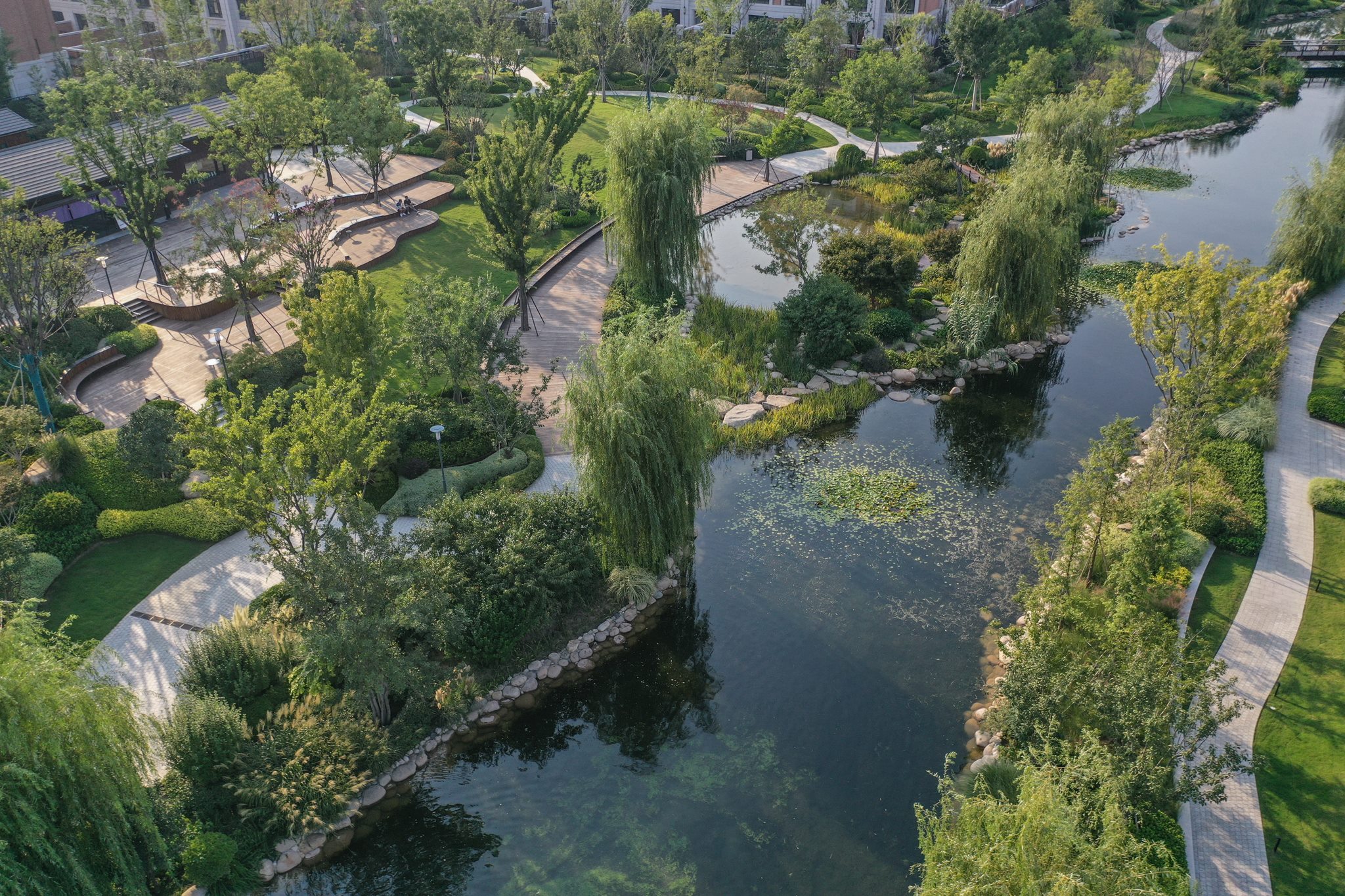














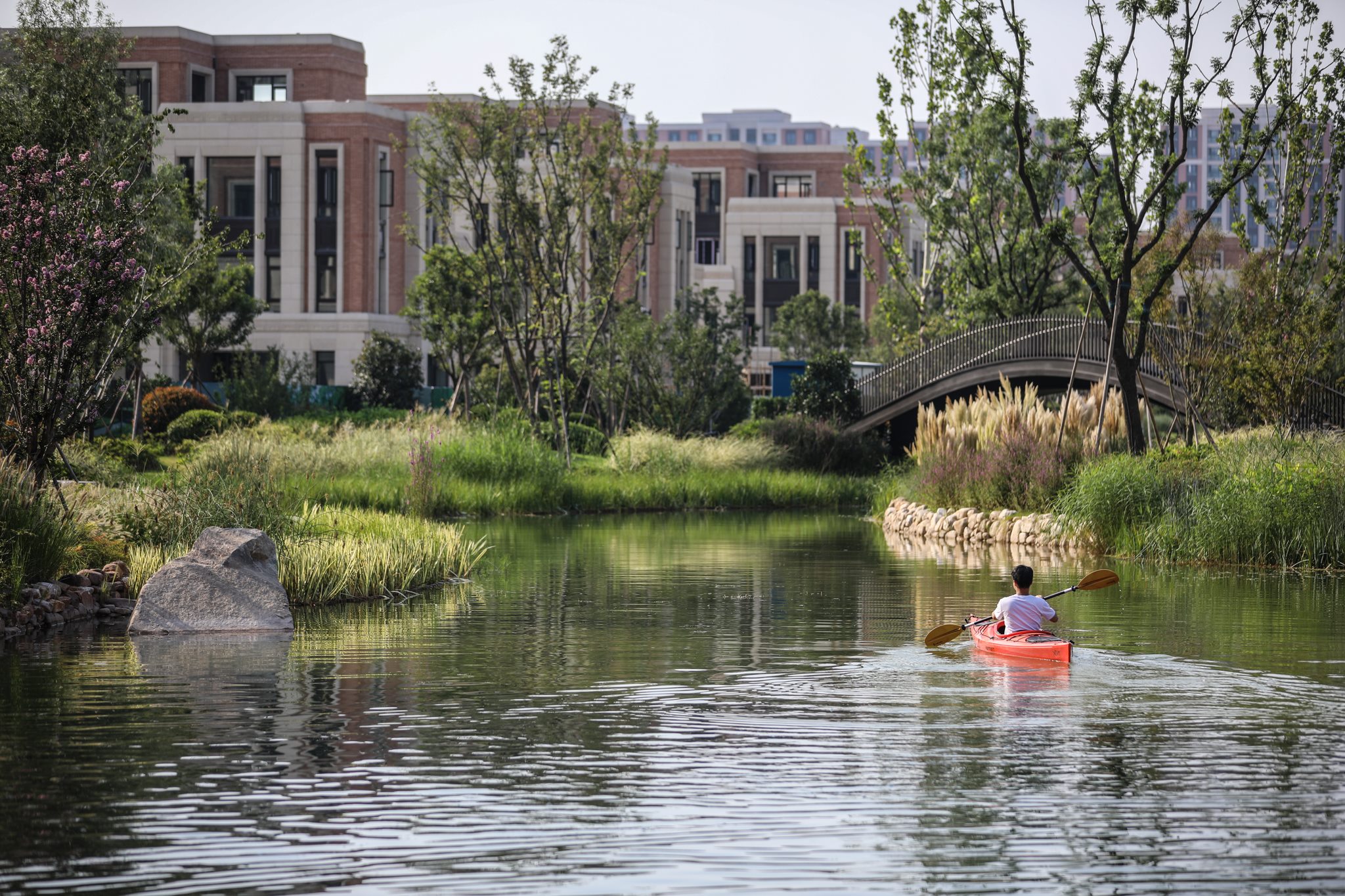

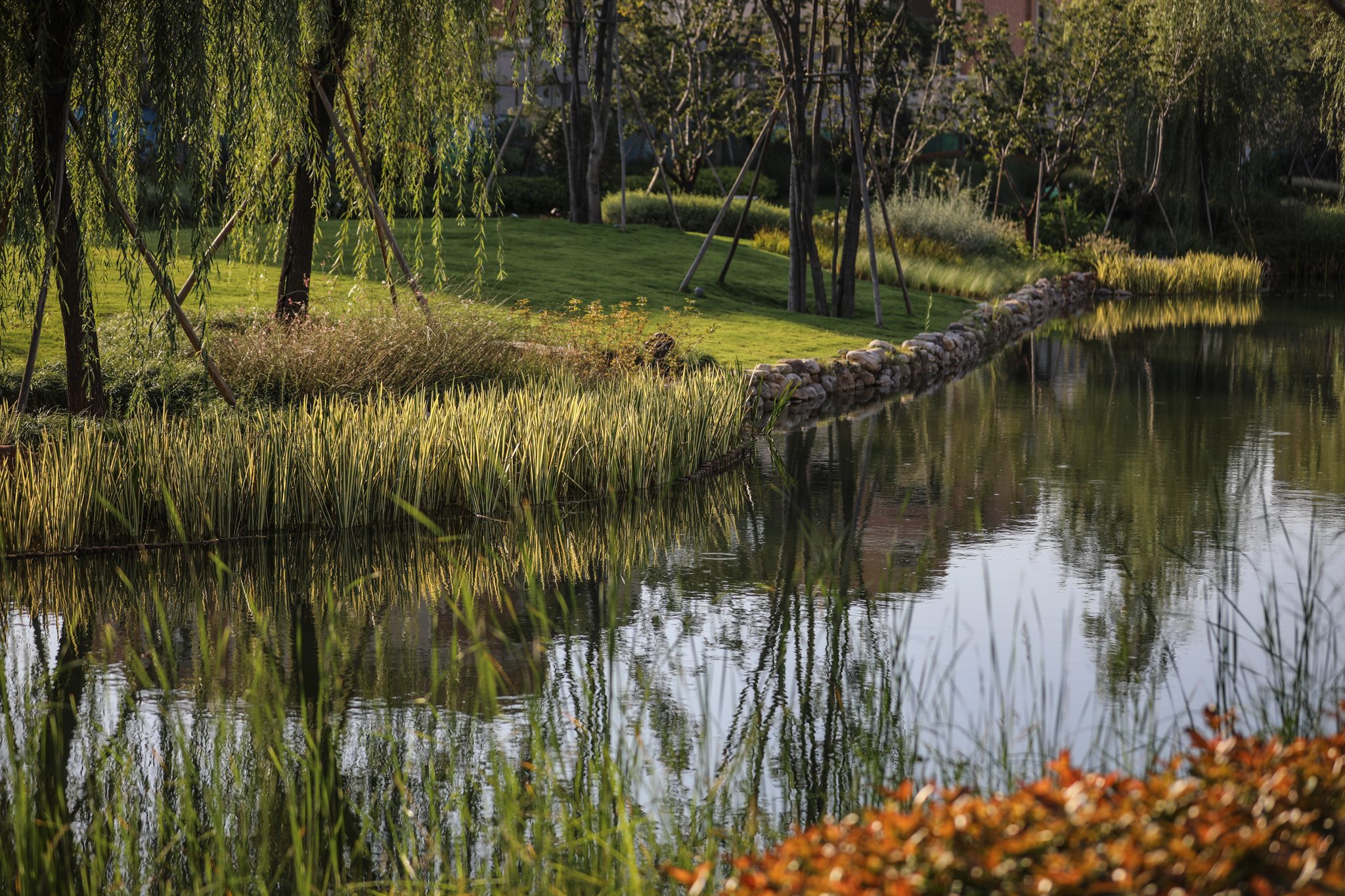
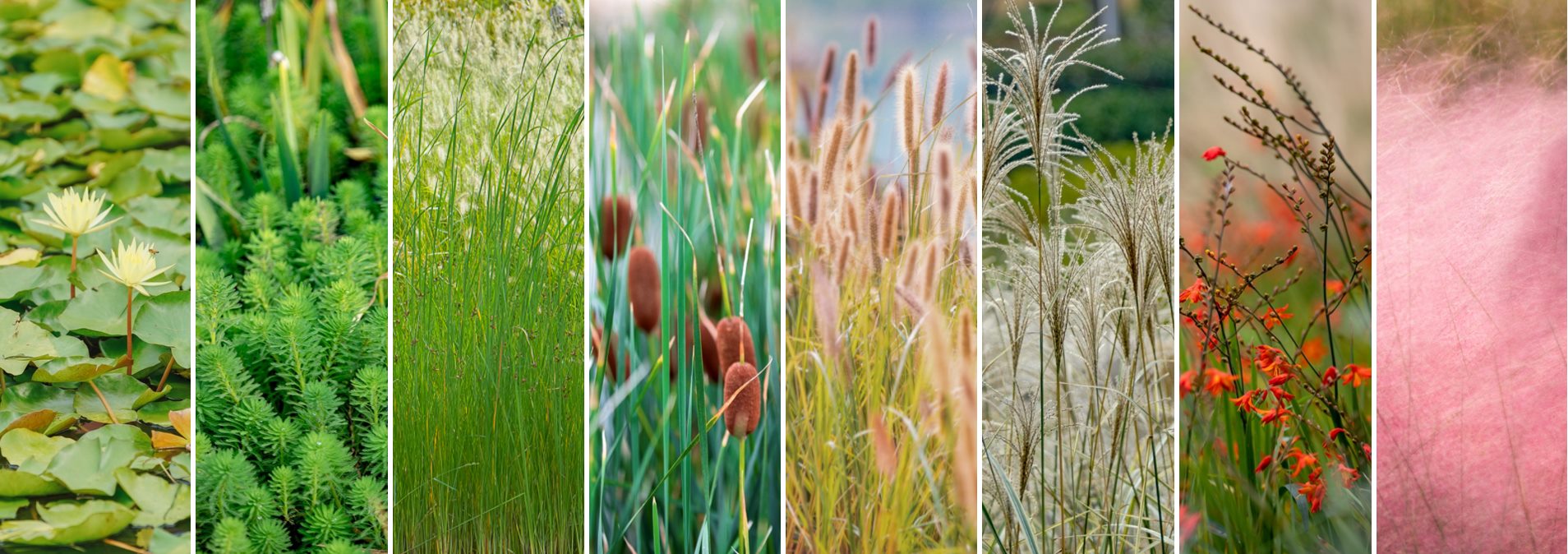
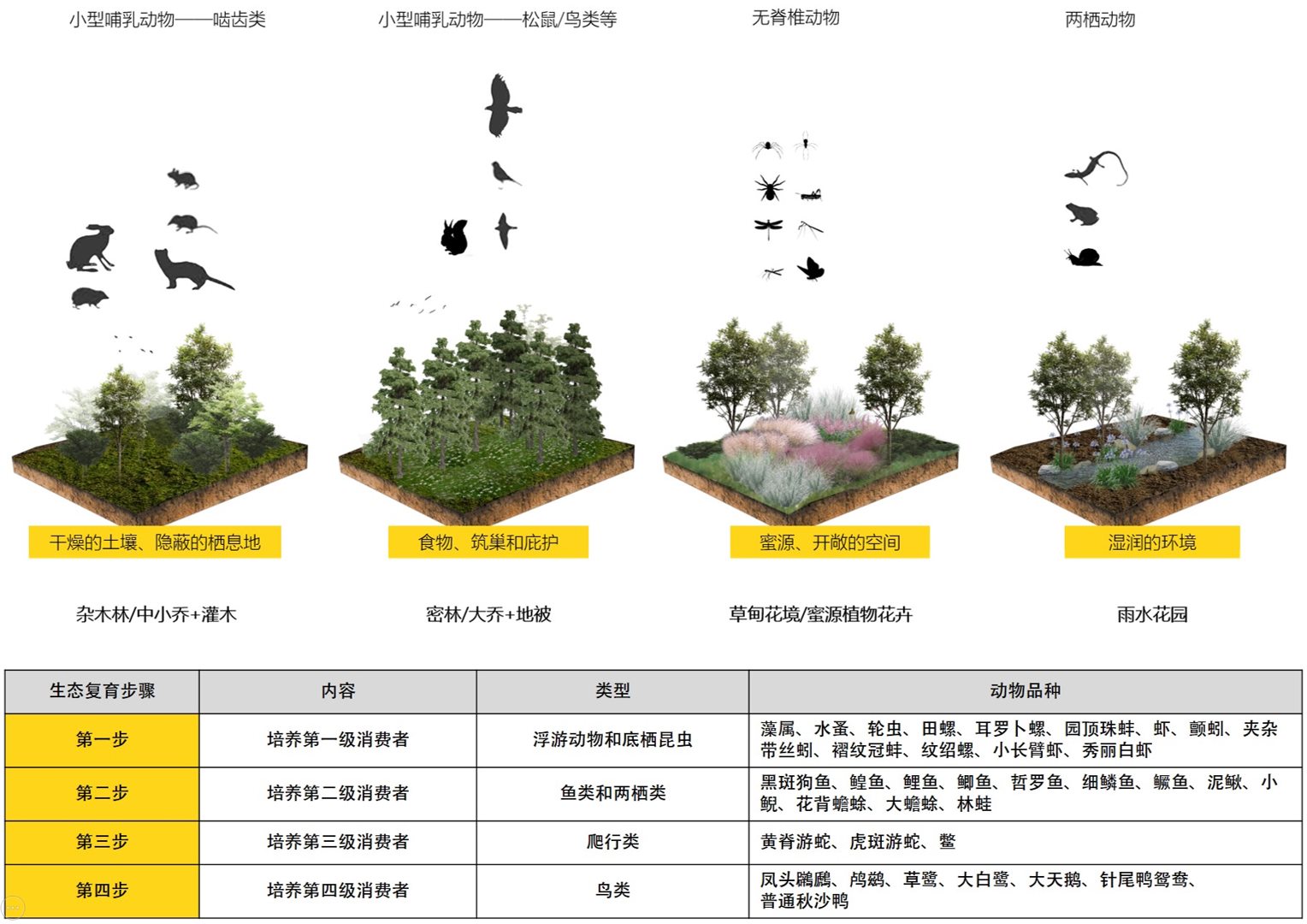
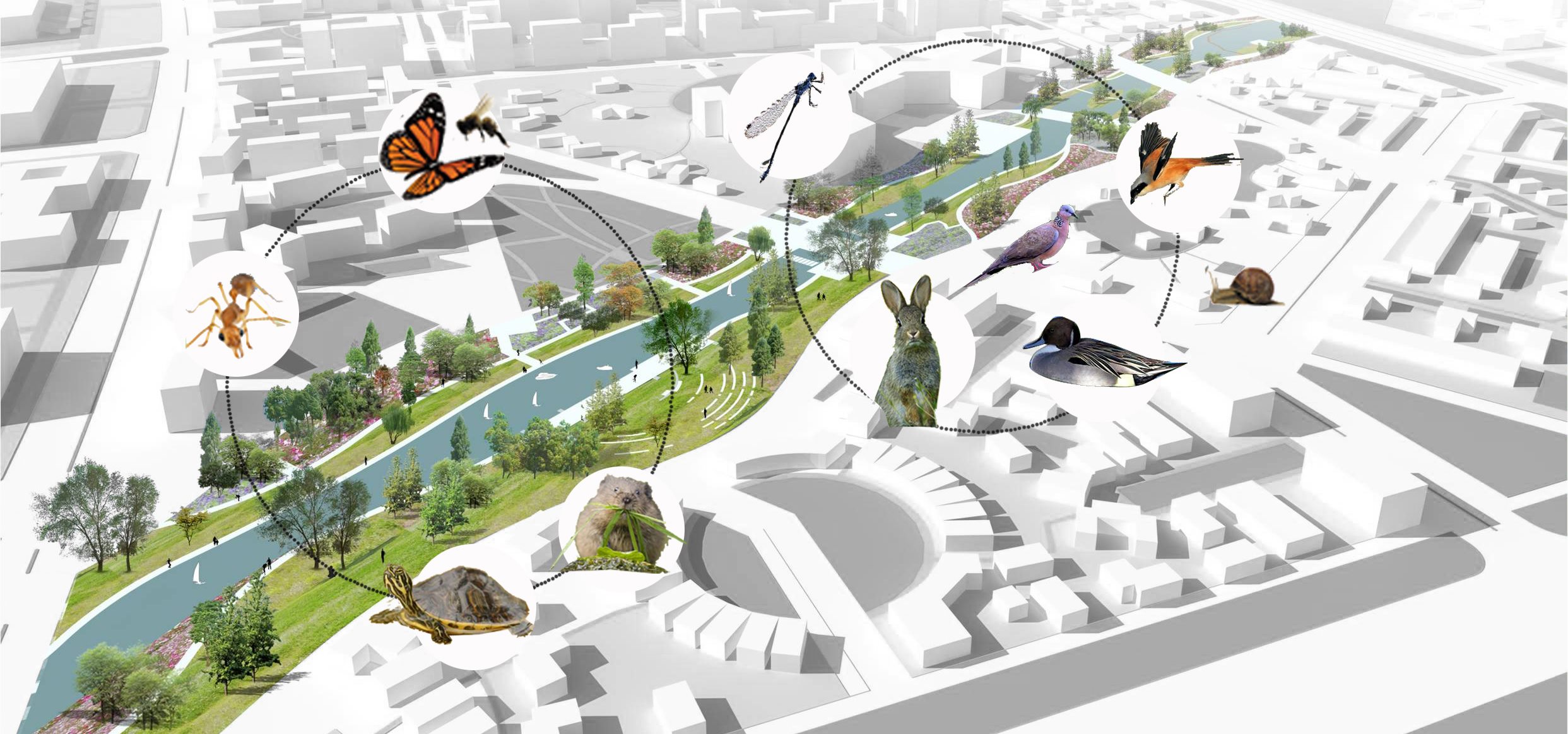
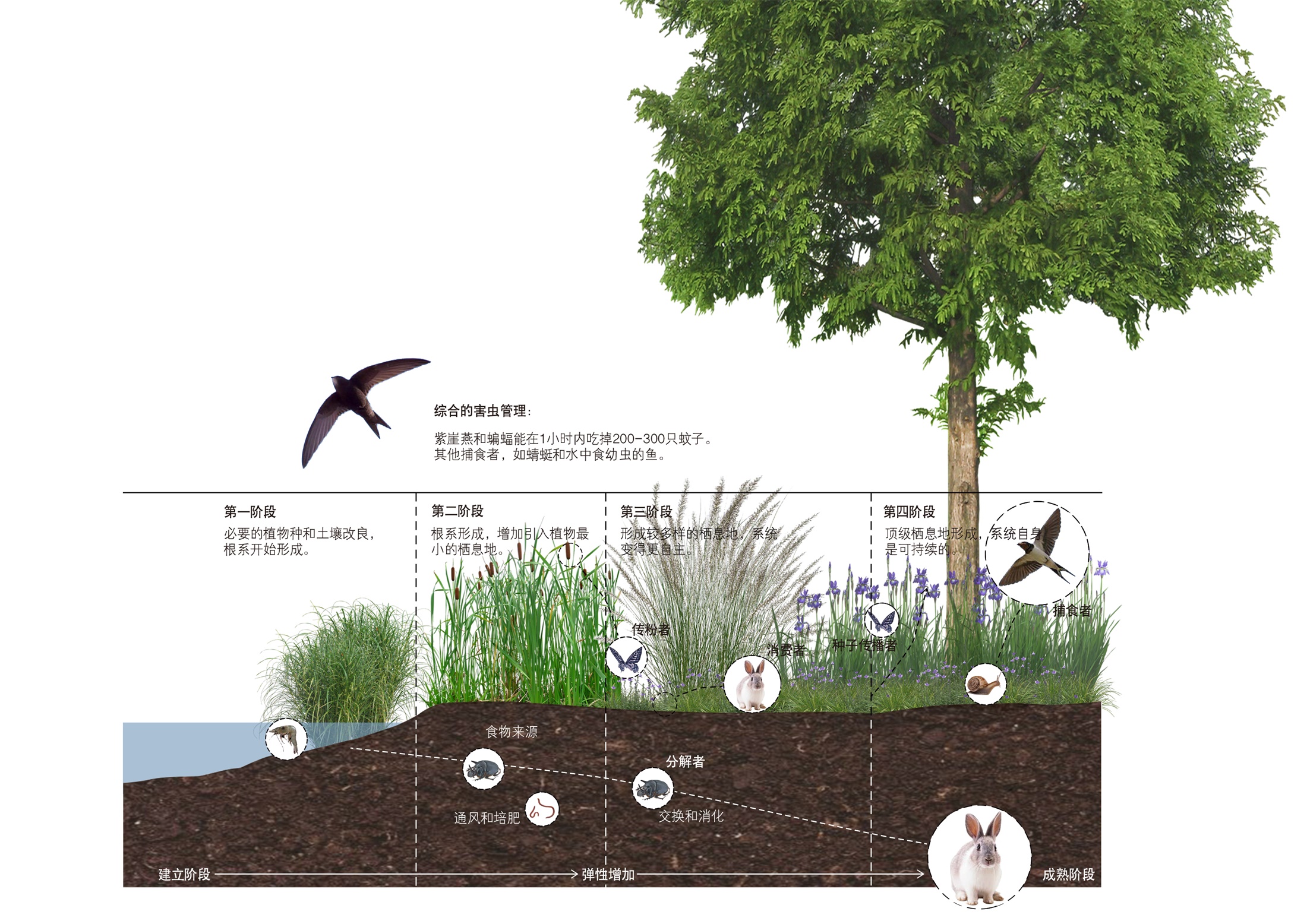

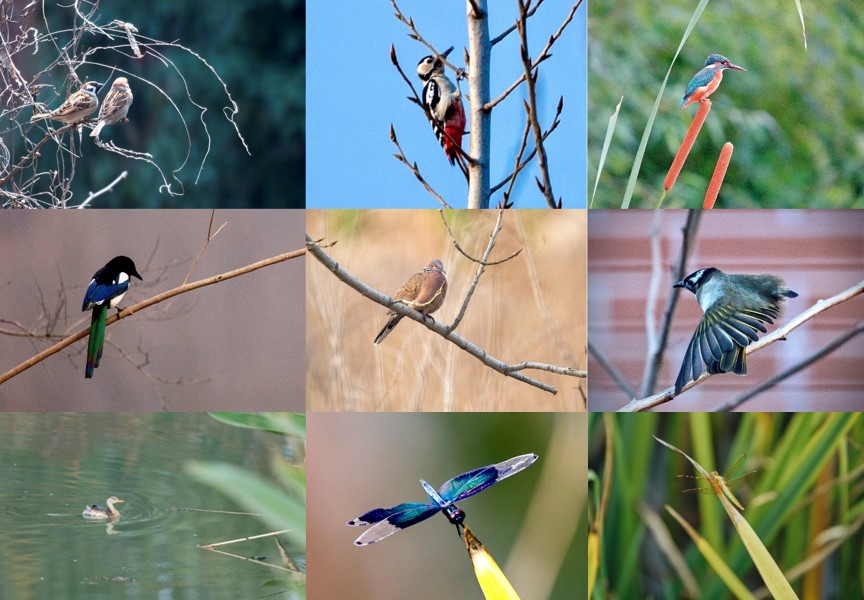



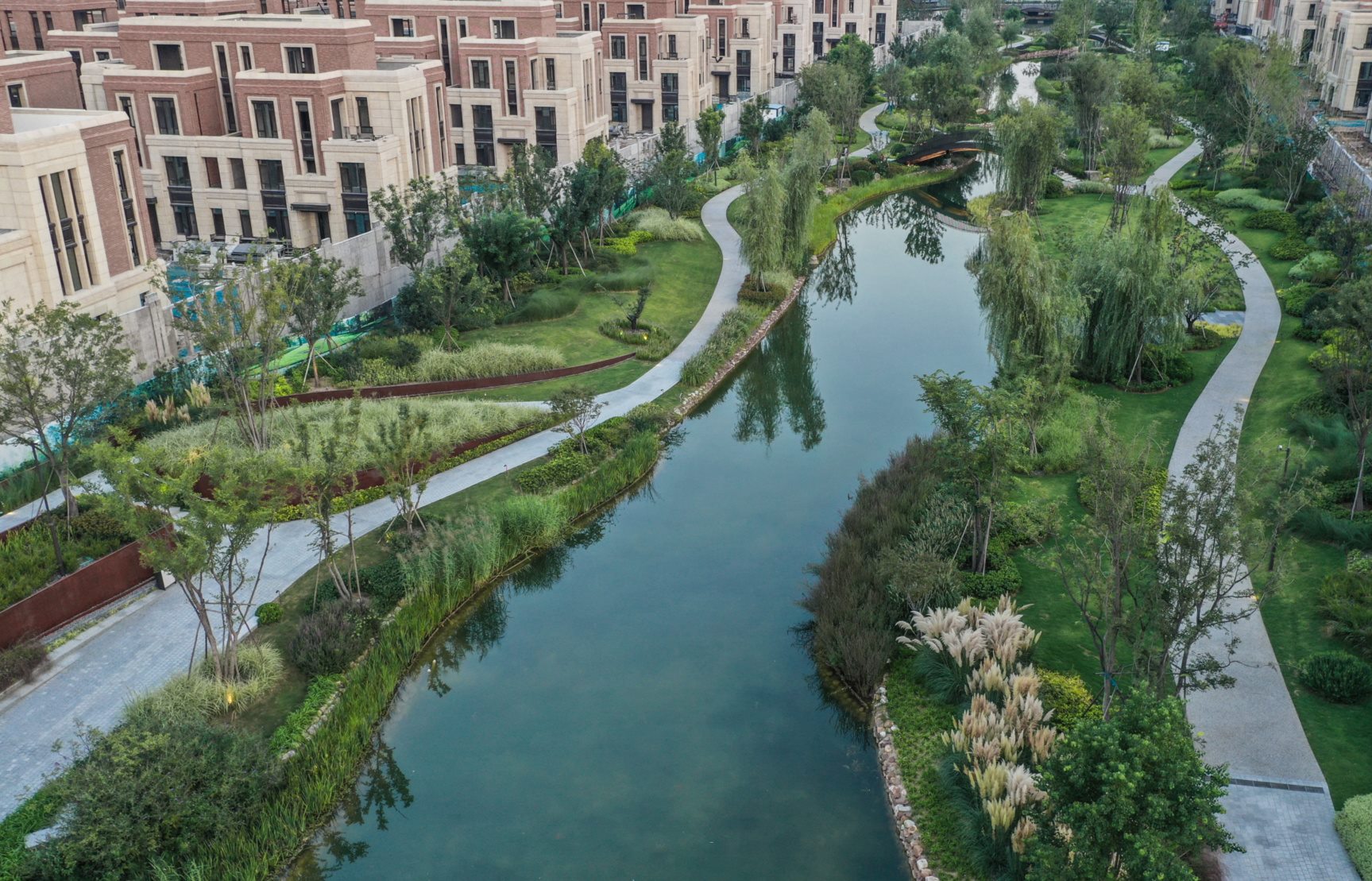




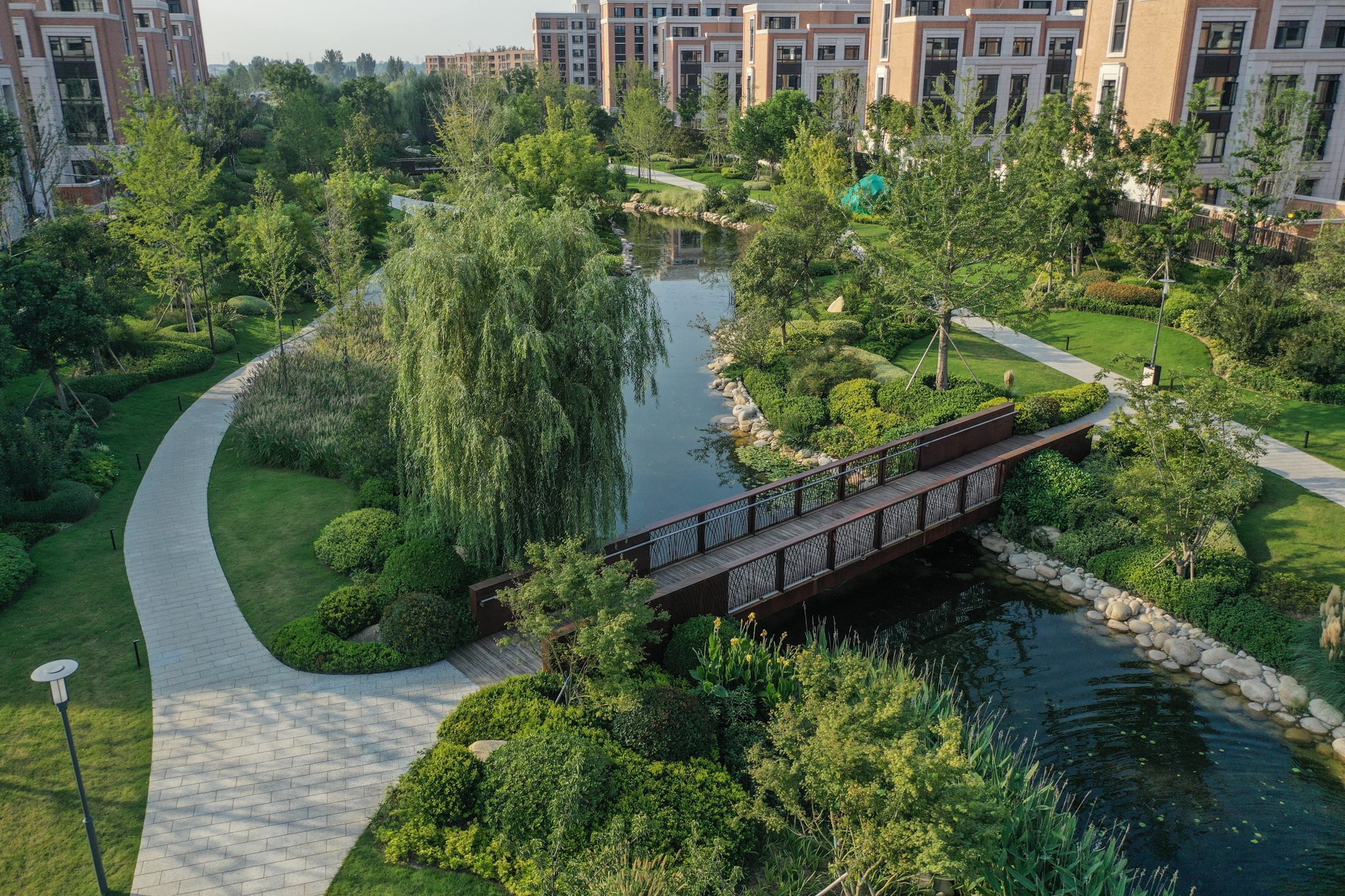
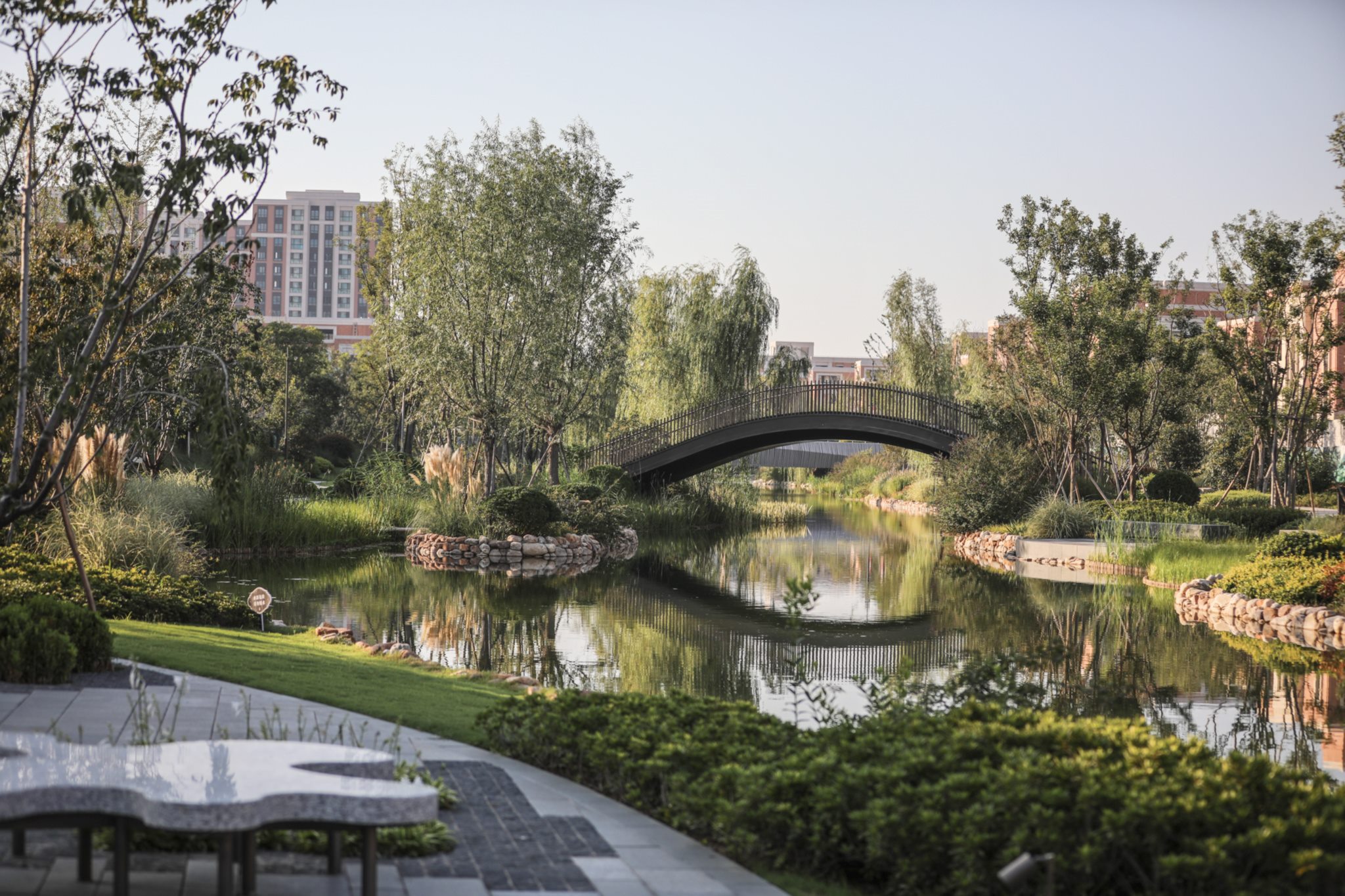
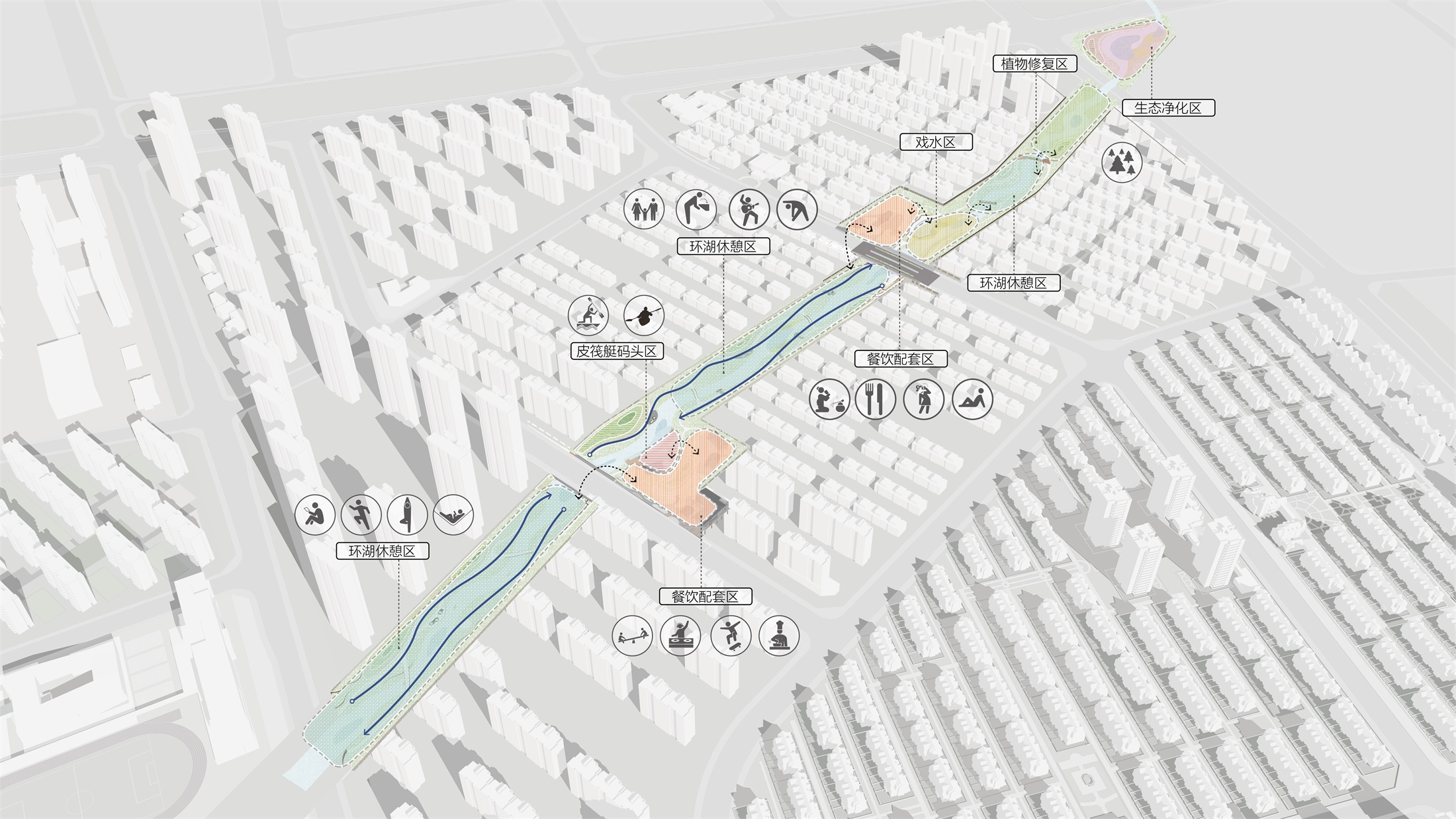
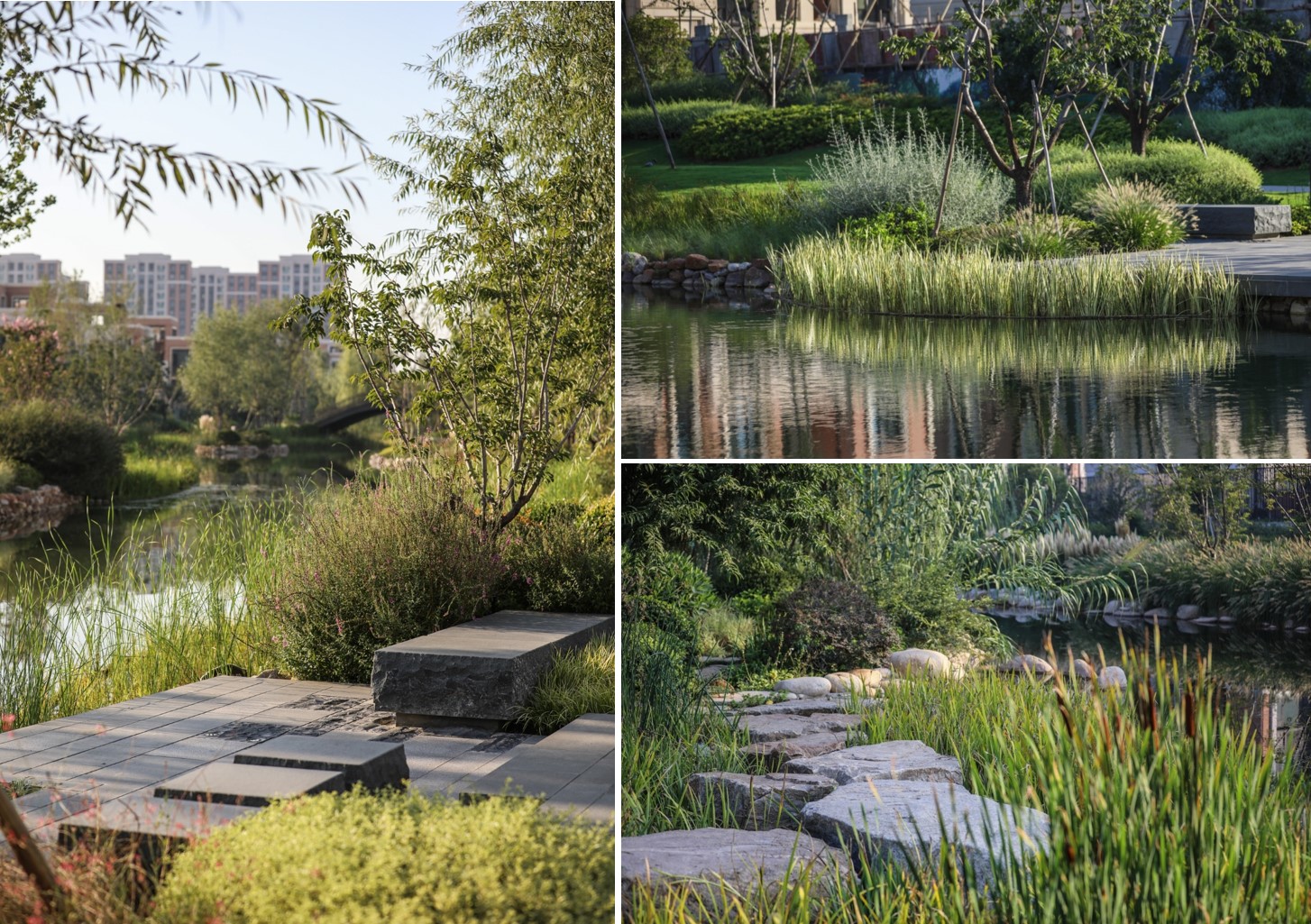
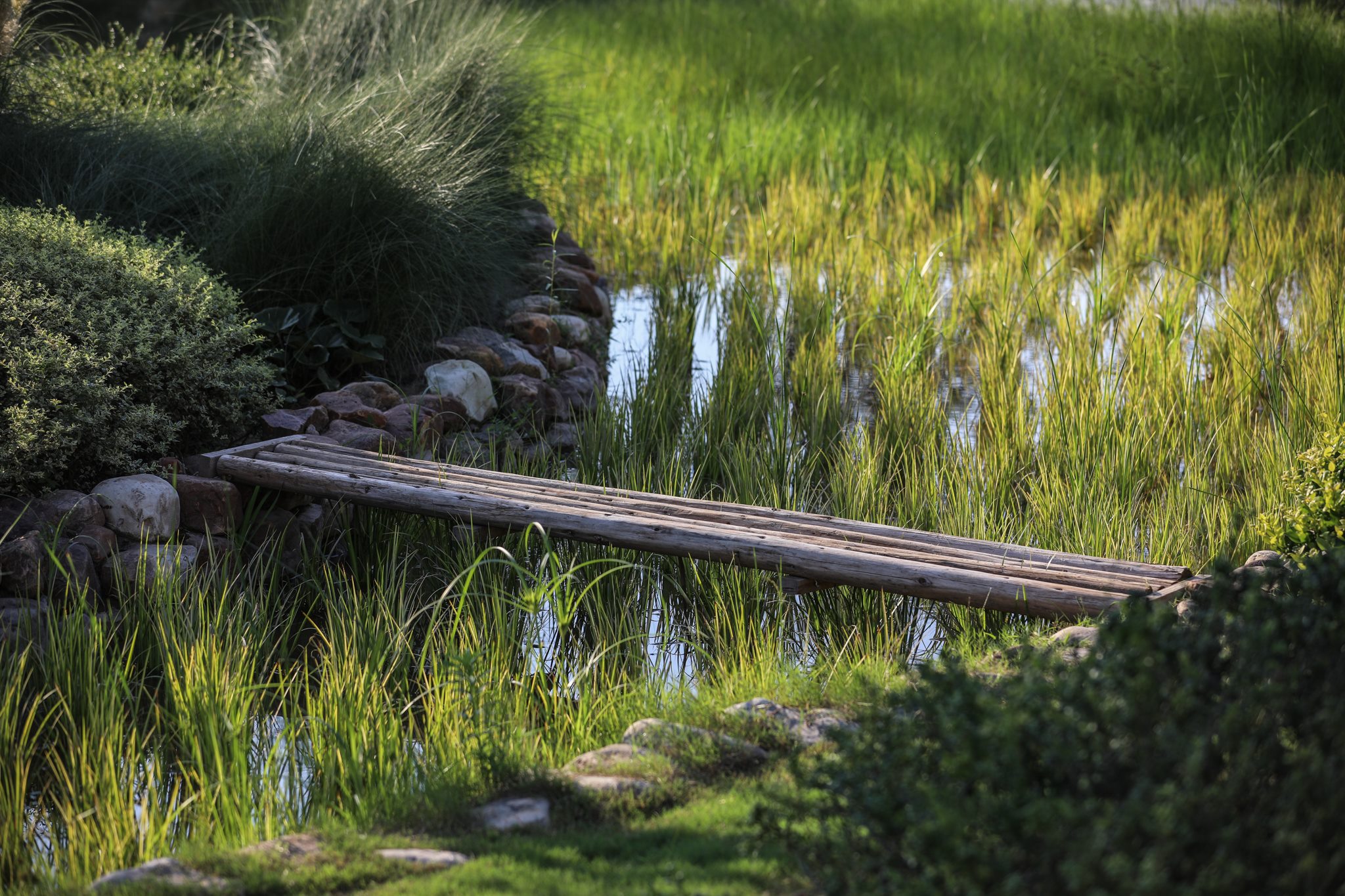

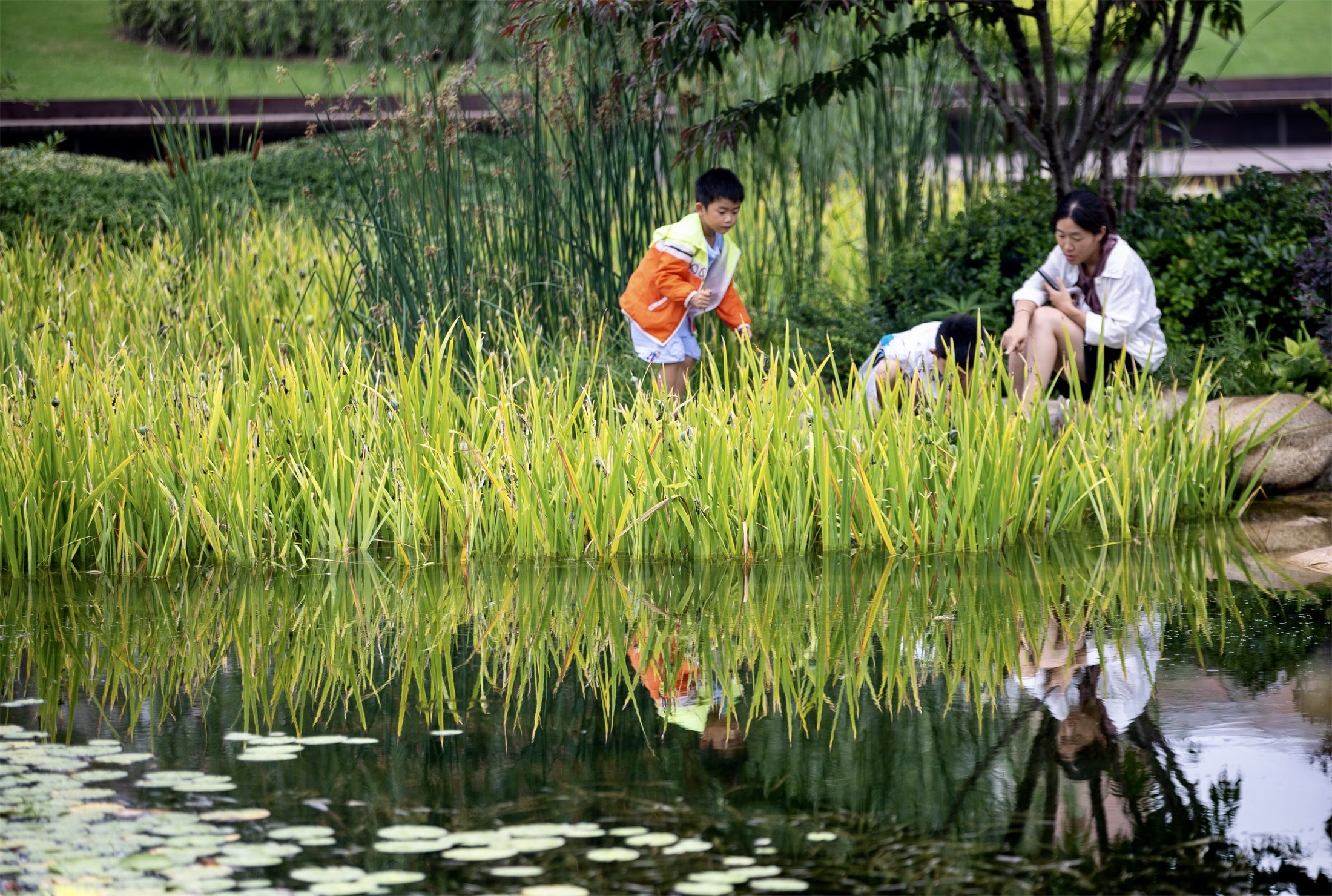
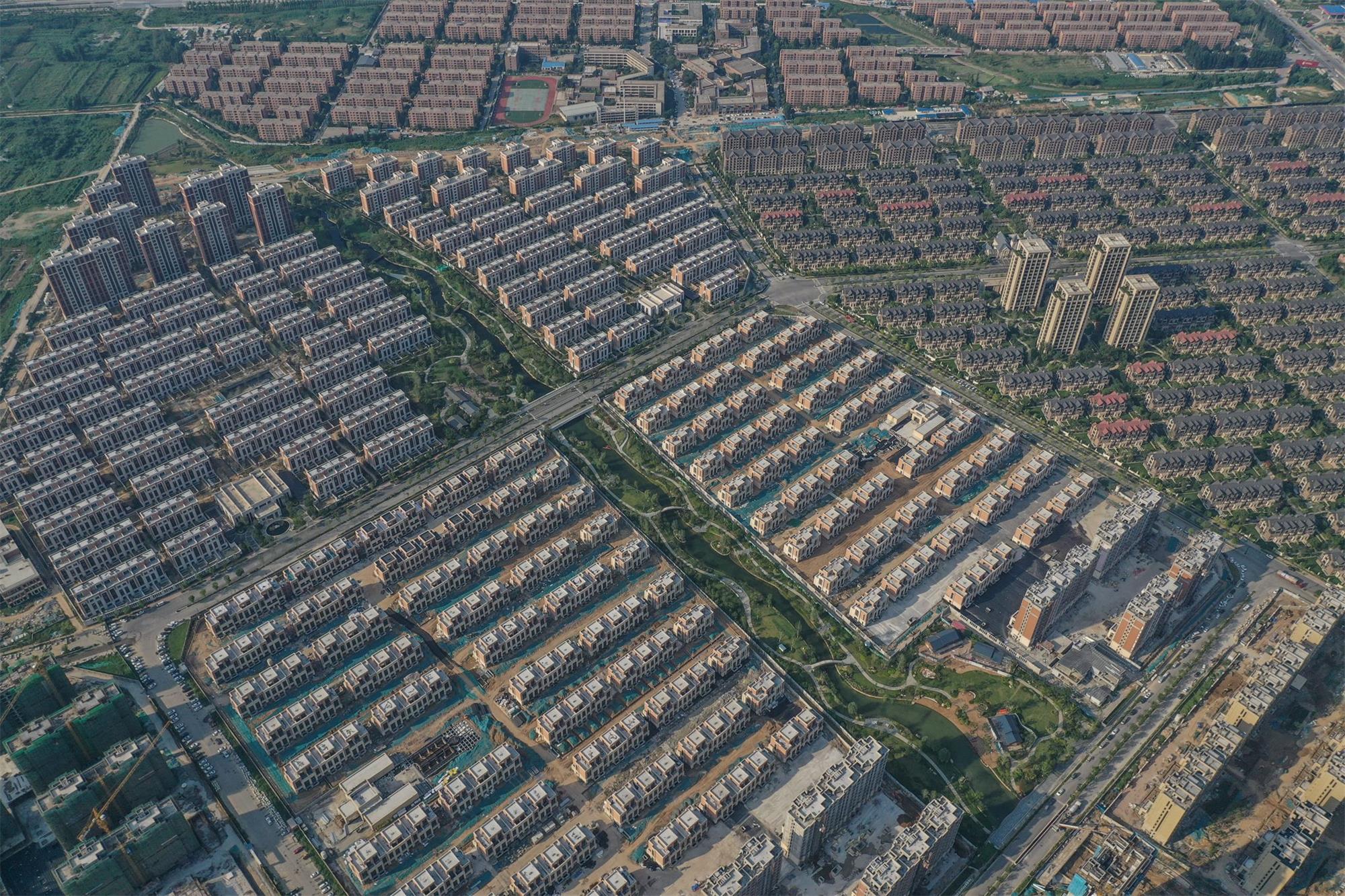


很有参考价值哎,文章也很详实,收藏!
很喜欢,感觉是一个成熟的设计
好棒啊,方案很详实,实地效果也很棒,厉害厉害,学习了。